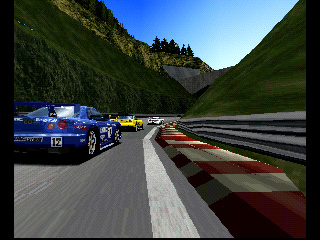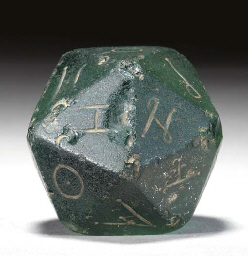
Last night at the weekly gaming session, something a bit unlikely happened. We played the first 5 turns of a Battletech game, and I won the initiative roll all 5 turns. Now without going into the details of the game the initiative roll occurs at the beginning of each turn, and consists of a player from each side rolling two 6-sided dice, and the side with the highest total "wins" (re-roll on ties). This gives 50% chance of winning the initiate on any given turn. The chance of doing this 5 times in a row from the beginning of the game is 0.5^5 or about 3.1%. Some luck!
I was probably just lucky, but then I got to thinking: Having left home in a hurry that morning and forgetting to bring my regular dice, I picked up a new set at the store. (This was not from any real need, because my friends would have loaned me dice. I just try to spend money at the
store that provides our gaming space.) These new dice were smaller than the one I usually use, and I wonder if these might actually be unfairly weighted, with the missing plastic (where the pips are) making rolls of higher numbers more likely (because the 1-pip side is heavier than the 6-pip side). This would also be true of regular size dice too, but perhaps the uneven weighting would be more pronounced with these smaller dice.
Loaded dice have a weight inside it closer to the side intended to be down. I had a pair of these when I was a kid (from a "magic kit" I think), and I recalled how my brother showed me the "water test" (Thanks John!). If you have ever seen loaded dice thrown on a hard surface, you might notice they bounce in a noticeably unusual fashion, but still don't always land on the weighted side. If you drop loaded dice into water though, the heavy side ends up on the bottom almost every time. I don't expect that these dice are so heavily loaded I will see a strong effect, but doing a standard statistical experiment "in the water" ought to amplify any unfairness - if it exists.
To simplify things a bit, I will drop a bunch of dice into water and count how many six-pips come up, reasoning that if my dice are unbalance then this is the mostly likely result. I could do this without the water too, but my thinking is that even a small unbalancing of these dice will be much easier to detect in this manner, therefore I don't need a terribly large sample size. A "fair" die will come up 6 with 0.1667 probability. With a little bit of calculation I can up with a sample size estimate on 121 die rolls. This will give me at least 80% chance of detecting a statistical difference if the water test results come up with 6's with .2667 probability (or more), and a no more than a 5% chance of this happening purely by chance (2.5% actually). I'll get my hands wet tonight, and
report the results tomorrow.
If any statisticians are paying attention, this is a two sided test, but I could probably justify a one-sided test here. I have a professional aversion to one-sided test though. My calculations were based on a normal approximation.





